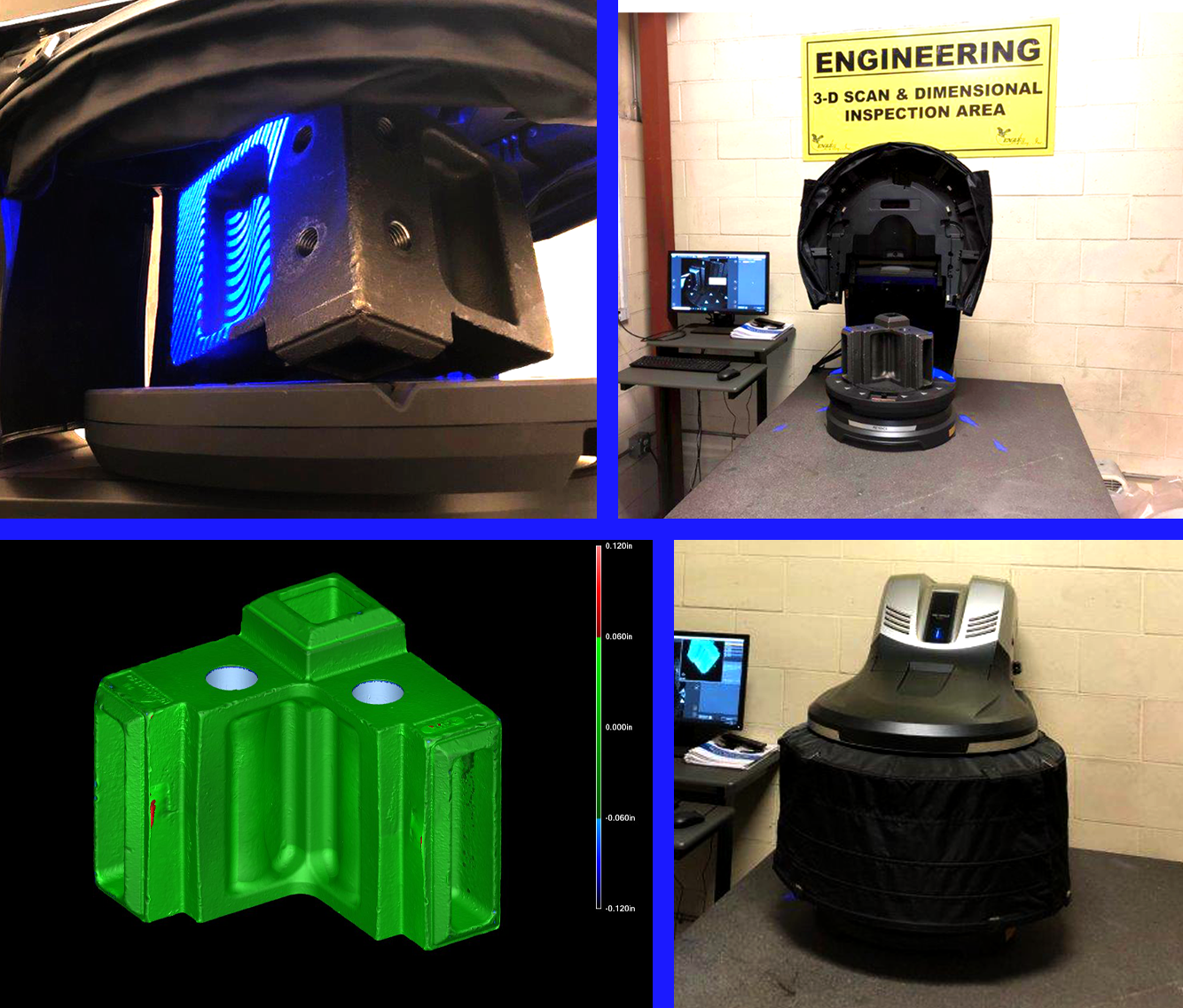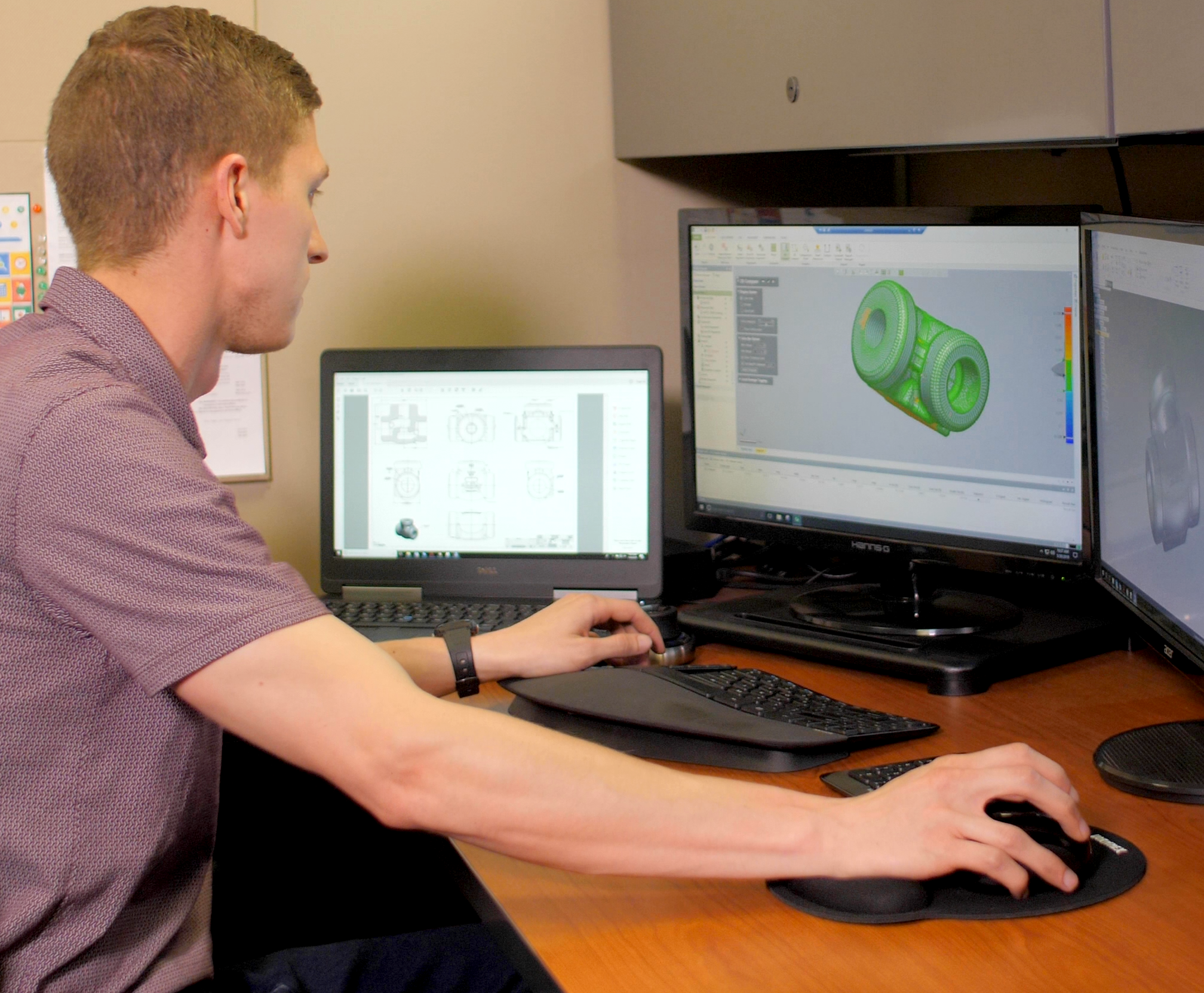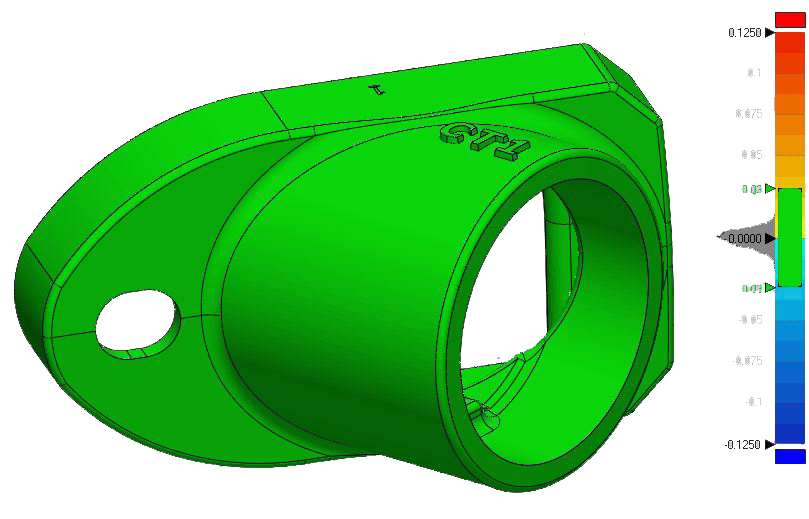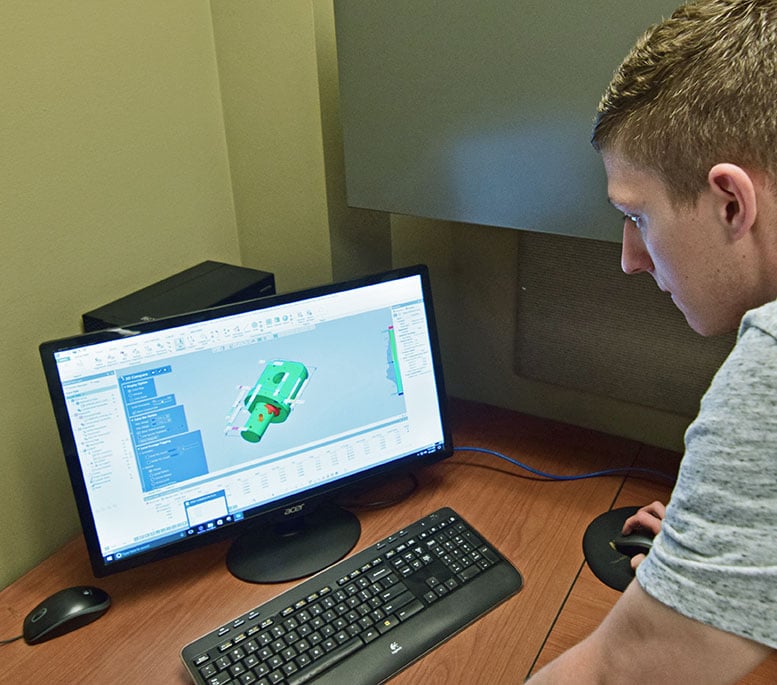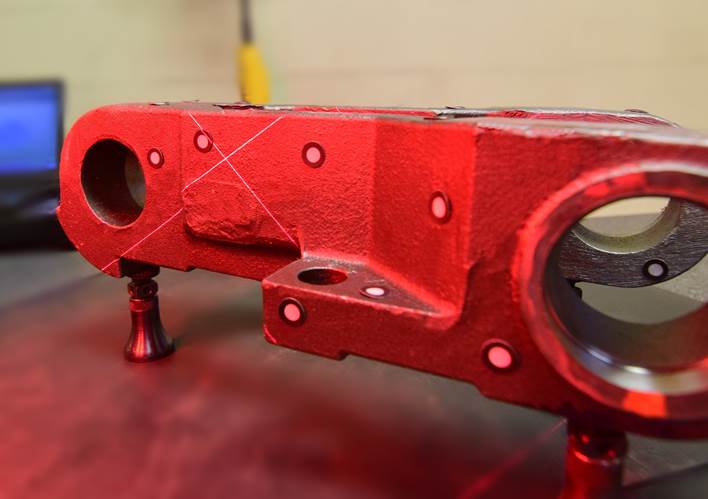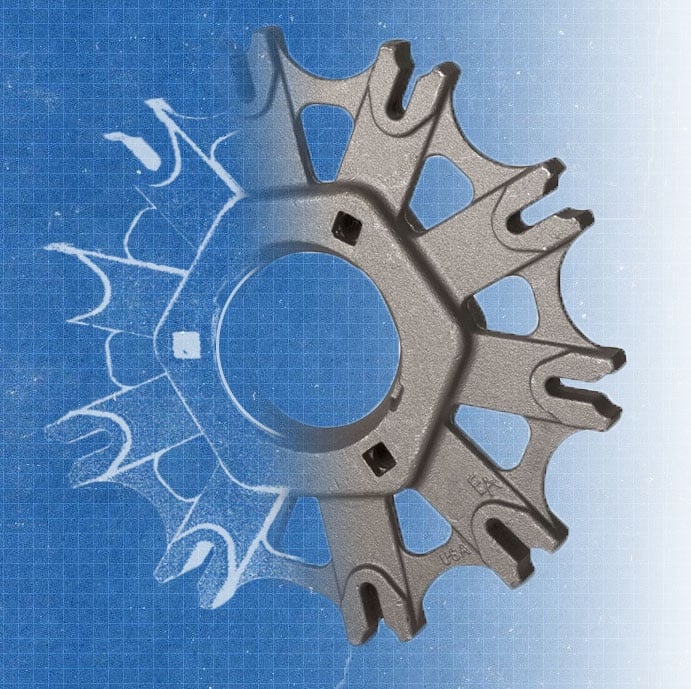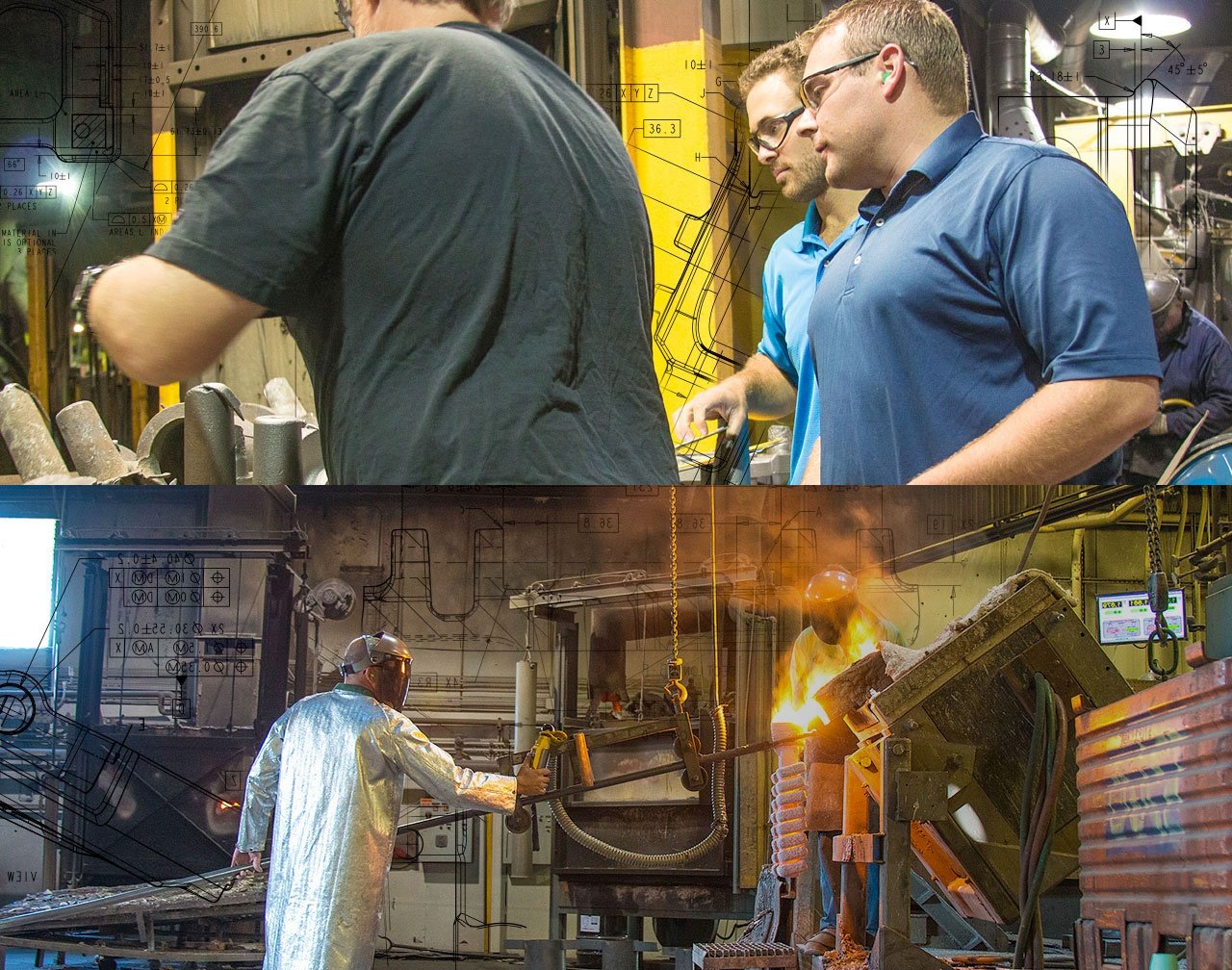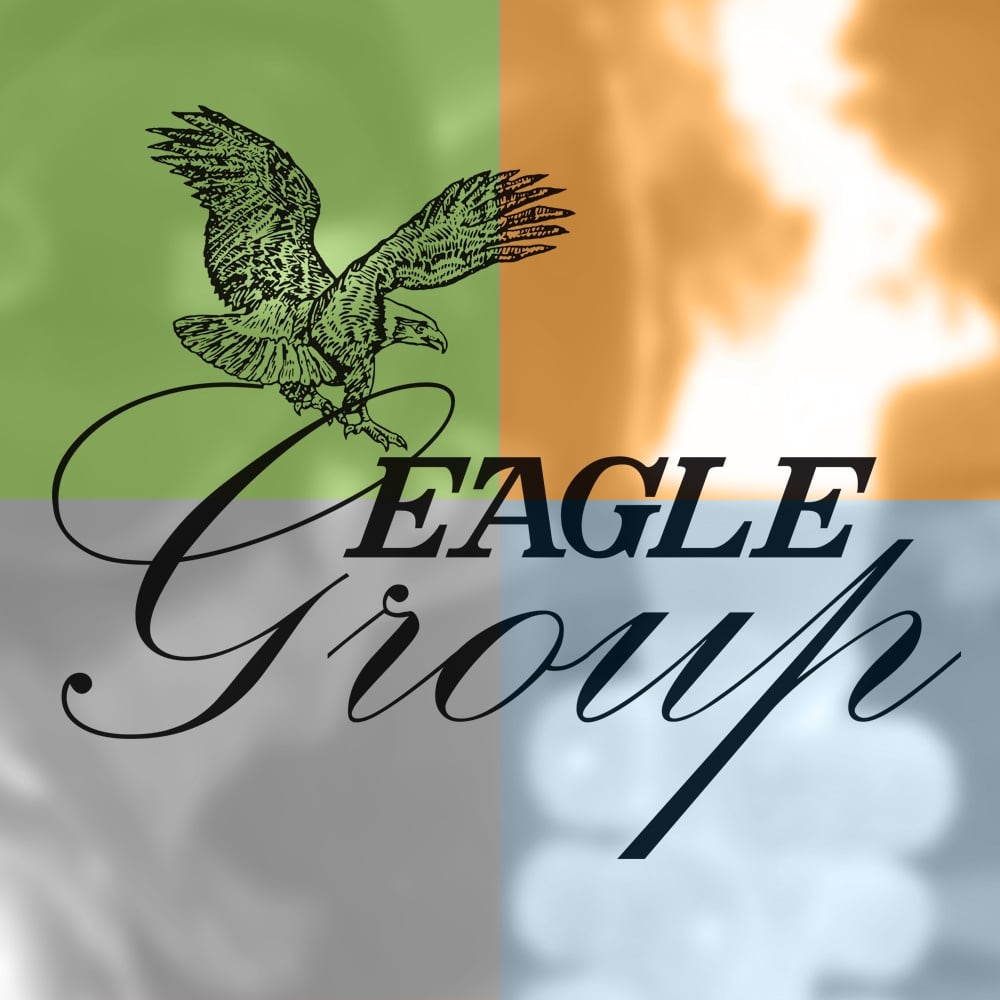State-of-the-Art 3D Scanning for Cast Products
The Eagle Group Blog previously wrote about our handheld laser scanner, capable of processing 1-2 million individual location points to accurately measure any surface. We recently built on that capability and purchased a Keyence VL-550 3D scanner CMM. The intuitive user interface, proprietary software and raw scanning power of the new equipment means we can process samples faster than ever before. By reducing measurement time and improving ease of use, we also open up a number of opportunities for advanced quality control.
Tags: Product Design, Development, Product Development, Measurement, 3D Scanning
What Is Design for Manufacturability?
Design for Manufacturability, or DFM, is an engineering practice that takes into account not just the way a product will look or function, but also how it will be produced. By applying DFM principles to new or existing products, manufacturers can improve product quality while optimizing cost and delivery time.
According to Eagle Alloy CTO, Nic Tarzwell, "DFM is the measure of all the steps involved to produce the component cost effectively while ensuring it meets (or exceeds) expectations of form, fit and function." In order to optimize Design for Manufacturability, the customer and the supplier must work together to determine the best design and process for producing quality-finished products at the least cost.
Tags: Product Design, Development, Product Development, Design for Manufacturability
Case Study: Reverse Engineering Cast Products on an Expedited Timeline
Cem-Tec, a manufacturer of steel light poles in business since 1974, approached Eagle Alloy, Inc. with an emergency order. Due to an unforeseen supply-chain issue, they needed to find a new foundry to manufacture one of their popular products. With orders in and customers waiting, the clock was already ticking.
The following case study illustrates the steps Eagle Alloy followed to transfer casting of the product to our facility and to ensure that Cem-Tec had high-quality products ready for their customers as soon as possible.
Tags: Eagle Alloy, Case Study, Product Design, Development, Product Development
Designing Cast Products: 3D Modeling and Solidification Simulation Software
The rise of CAD/CAM software largely defines the current era of manufacturing. While blueprints and dimensional charts are still widely used as reference guides, modern manufacturers rely on software to design prototypes and simulate casting processes. One of the first steps in the cast part development process is to create a 3D model. From there, engineers can improve the part shape, simulate a variety of casting processes and materials, and troubleshoot difficult manufacturing scenarios.
When done right, CAD/CAM software enables foundries to solve all the problems of casting in the virtual world, before pouring any metal. The results are cost savings for the customer, time savings for everyone, and reduction of overall waste.
Tags: Product Design, Development, Capabilities, Inspection, Product Development, Technology, CAD/CAM
How Eagle Alloy's Handheld Laser Scanner Leads to Better Cast Products
Product development processes vary widely from foundry to foundry. The Eagle Group's Product Development blog series aims to highlight practices used by leading foundries that prioritize quality in every part they produce.
One product development practice that sets Eagle Alloy apart from other shell molding foundries is their use of a handheld laser scanner for inspection and dimensional reporting. This technology greatly improves the accuracy of dimensional reports, and makes it easier for customers to verify that new parts meet their requirements.
Tags: Metrology, Product Design, Development, Inspection, Product Development, Technology, 3D Scanning
Designing Cast Products: Starting the APQP Process with the Right Questions
APQP, or "Advanced Product Quality Planning," is a product-design process developed by automakers in the 1980s. Since then, a large number of businesses have adopted APQP for the product development stage.
A major portion of APQP is devoted to planning the production process, and making the right design decisions at an early enough stage to prevent expensive corrections later. When APQP is carried out correctly, it's a comprehensive and complete process. The foundry will engage the customer on multiple levels to learn everything they can know about the product, its end use and its working environment before finalizing design.
Tags: APQP, Product Design, Development, Product Development
5 Product Design Steps Your Cast Product Supplier Should Follow
One major factor that sets leading foundries apart from the rest is the product design process. Foundries that follow these five steps are much more likely to produce quality cast parts that function as expected, with low rates of returns and defects. They also frequently delight customers with innovative design suggestions and efficient processes that lead to better parts, lower costs and higher quality.
In the 1980s and 90s, product design procedures were so varied that major American automakers created a set of standard guidelines for their suppliers to follow. These manuals led to the modern practice of "Advanced Product Quality Planning," or APQP.
Tags: APQP, Product Design, Development, Product Development
Getting Started with the Eagle Group: What You Need to Know
The Eagle Group is comprised of three companies: a shell molding foundry, an investment casting foundry and a CNC machine house. Together, we're able to manufacture a broad range of metal products from concept to completion.
If you're looking for a new supplier for your raw or machined cast products, the Eagle Group could be the perfect fit. We pride ourselves on customer satisfaction, continuous improvement and outstanding work during all phases of the production process.
Tags: Metalcasting, Manufacturing, Product Design, Development, Capabilities, Product Development




